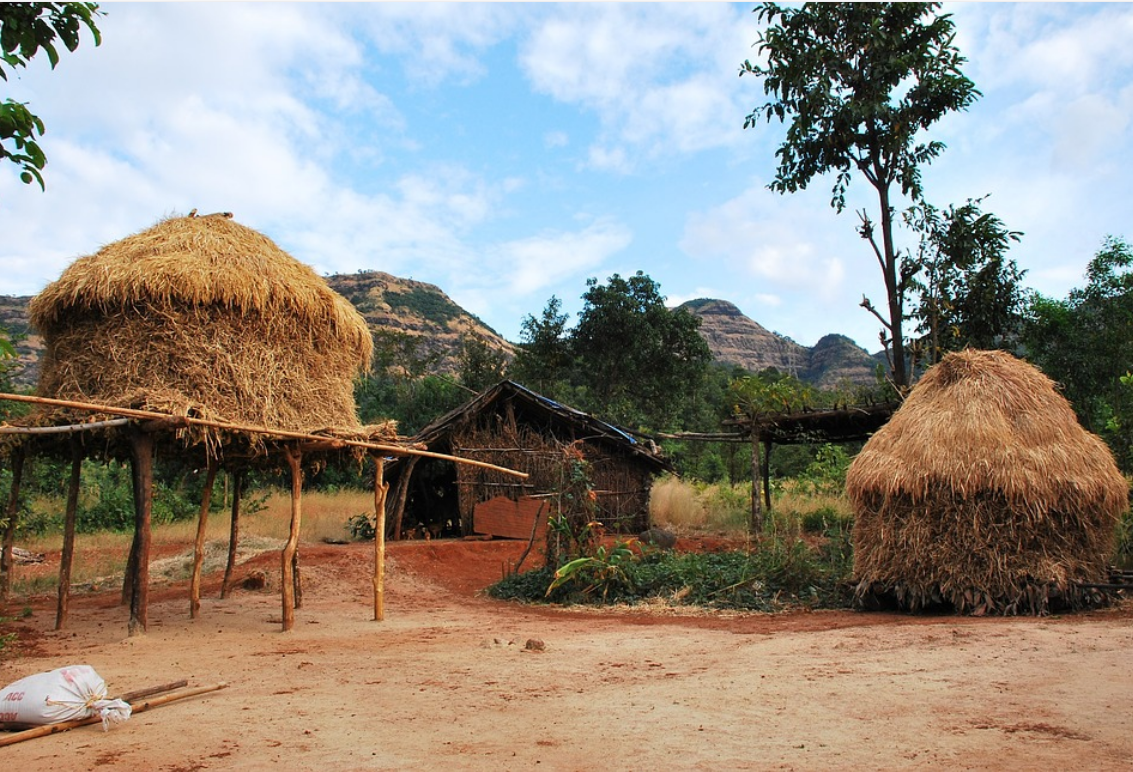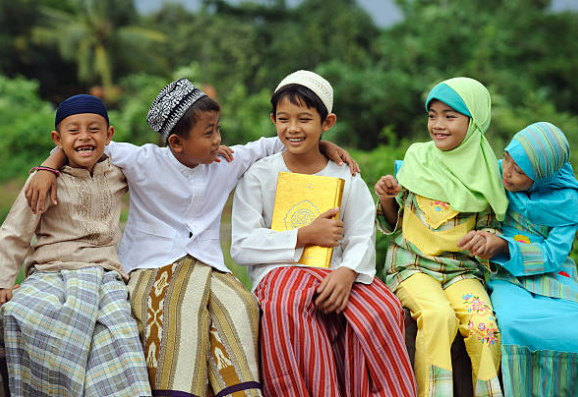Life in an Indian Village | Essay on Life In An Indian Village in English | Village
Indian villages are a reflection of the country's rich cultural heritage and diverse social fabric. They play a critical role in preserving traditional practices and languages while also adapting to modern life and changing economic and social conditions.
Life In an Indian villages are known for their rich cultural diversity, which reflects the diversity of the country as a whole. India is home to a wide range of ethnic, linguistic, and religious groups, and these groups are represented in villages across the country. in this article I brief you or essay on life in an India Village who will explain and increase understanding about Indian Village life.
Table of content:
1-Indian village life:/Life in an Indian Village
2-Moral Values
3-Accupation of people in Villages in India
4-Family structure in Indian Villages
5-Education in Indian villages
6-Tribal villages in India:
7-Transportation in ruler India
8-indian village life is different from cities
1- Village Life:
Village life in India is characterized by a strong sense of community, simplicity, and close connection to nature. Most villages in India are rural and agriculture-based, and the majority of the population depends on farming for their livelihoods.
Village communities in India are typically close-knit, with families and neighbors supporting each other in times of need. There is a strong tradition of communal living, with many families sharing resources such as land, water, and livestock.
Village life in India is often centered around the local temple or mosque, where people gather for religious and social events. Festivals and celebrations are an important part of village life, and are often marked by elaborate rituals, music, dance, and feasting.
In terms of infrastructure, villages in India can vary greatly, with some having access to basic amenities such as electricity, running water, and healthcare, while others are more remote and lack these services. Education is also a challenge in many rural areas, and access to schools and higher education opportunities is often limited.
2-Village Moral Values:
Indian villages have a rich tradition of moral values and ethics, including respect for elders, hospitality, honesty, compassion, and community service. These values are often rooted in religion, culture, and local customs, and are passed down through generations. They promote harmony, empathy, and social cohesion, and are an integral part of the fabric of rural life in India.
3-Occupation of people in Villages in India:
The occupations of people in Indian villages vary depending on factors such as geography, climate, and access to resources. However, some common occupations in Indian villages include agriculture, animal husbandry, fishing, handicrafts, weaving, and small-scale businesses. Many people also work as laborers in nearby towns and cities. The choice of occupation often depends on the skills and resources available to the individual or family, as well as market demand and government policies.
4-Family structure in Indian Villages:
Family structures in Indian villages are typically joint or extended, where multiple generations of a family live together in the same household. This reflects the strong emphasis on family and community in Indian culture. The head of the household, typically the eldest male, is the primary decision-maker and provider for the family. Women often play a significant role in household and childcare responsibilities.
In some regions, the family structure is matrilineal, where descent and inheritance are traced through the mother's side of the family. However, in general, the family structure in Indian villages is deeply rooted in tradition and social norms and is an essential part of the community fabric
5-Diversity of Indian Villages:
Indian villages are incredibly diverse, with significant variations in language, culture, customs, and traditions. Each region of India has its distinct set of villages with unique socio-cultural practices, economic activities, and geographical features. The villages in the north differ significantly from the ones in the south, and the same can be said for the east and west.
The diversity in Indian villages is evident in the architecture, clothing, cuisine, and festivals, among other things. The rural population in India comprises various ethnic groups, including Scheduled Tribes, Scheduled Castes, and Other Backward Classes. Thus, it is challenging to generalize the characteristics of Indian villages, and it is necessary to understand the nuances of each region and community.
6-Education in Indian villages:
Education in Indian villages is a critical issue, and many challenges still need to be addressed to ensure equitable access to education. While the government has made significant strides in providing basic education infrastructure and expanding access to schools in rural areas, there are still many barriers to education in Indian villages
These include poverty, lack of transportation, cultural and social norms that discourage girls from attending school, inadequate school facilities, and a shortage of qualified teachers. As a result, many children drop out of school early, and illiteracy rates in rural areas remain high. However, there are also many success stories of individuals and communities overcoming these challenges and achieving great educational outcomes, indicating that it is possible to address these issues with the right interventions and support.
7-Tribal Life in India:
Tribal villages in India are home to indigenous communities that have lived in the country for thousands of years, predating the arrival of other groups. There are over 700 Scheduled Tribes in India, with a population of around 104 million. These tribes are concentrated in hilly, forested, and remote areas across the country.
Tribal villages often have their unique socio-cultural practices, languages, and customs that differ significantly from mainstream Indian society. The communities have a deep connection to the land and their natural surroundings, and many rely on subsistence farming and traditional forest-based livelihoods.
Tribal villages in India face several challenges, including displacement due to development projects, land alienation, discrimination, and lack of access to basic services such as education and healthcare. However, efforts are being made by the government and civil society organizations to address these issues and empower tribal communities to preserve their culture and livelihoods while also accessing modern services and opportunities.
8-Transportation in ruler India:
Bulla cartTransportation in rural India is primarily dependent on road networks, including national highways, state highways, district roads, and rural roads. However, the quality and extent of these road networks vary significantly across regions, with some areas lacking proper connectivity, especially in hilly and forested regions.
Public transport, such as buses and trains, also connects rural areas to nearby towns and cities. However, the frequency and quality of these services can be limited, with long waiting times, overcrowding, and poor infrastructure. Private vehicles, including two-wheelers and four-wheelers, are also commonly used in rural areas, but they are not affordable for everyone and can be expensive to maintain.
In some areas, traditional forms of transportation such as bullock carts and horse-drawn carriages are still used, although their usage is decreasing over time. Overall, transportation in rural India remains a significant challenge, with many people facing difficulties in accessing essential services and opportunities due to poor connectivity and limited access to affordable and reliable transport.
9-Indian village life is different from cities:
Indian village life is different from city life in many ways. Villages are typically smaller, quieter, and less crowded than cities, with a more relaxed pace of life. The close-knit communities in villages foster a strong sense of togetherness and social cohesion, and people often have deep relationships with their neighbors and extended families.
The economy of Indian villages is primarily based on agriculture, animal husbandry, and handicrafts, with small-scale businesses and cottage industries also playing a significant role. In contrast, cities have a more diverse economy, with larger industries, businesses, and services.
The infrastructure in villages is generally less developed than in cities, with limited access to basic services such as healthcare, education, and sanitation. However, there has been significant progress in recent years to address these gaps through government initiatives such as the Swachh Bharat Abhiyan, which aims to improve rural sanitation and hygiene.
In terms of culture, villages in India have a rich tradition of art, music, dance, and folklore that reflects the diversity of the country's regional cultures. This cultural heritage is a source of pride and identity for rural communities, and many festivals and rituals are celebrated throughout the year, often based on the agricultural calendar. In summary, while Indian village life and city life share some similarities, there are significant differences in terms of community, economy, infrastructure, and culture
10-Pleasure and peace in villages :
Mental peace is an important aspect of life, and many people believe that living in a rural environment can contribute to a more peaceful and less stressful way of life. In Indian villages, people often have more contact with nature, and they may have a closer connection to their land, animals, and surroundings. The slower pace of life in villages can provide a break from the fast-paced and often stressful environment of cities.
In addition, the close-knit communities in villages can provide a sense of social support and belonging, which can be beneficial for mental well-being. Villagers often have strong family and community ties, and they may have a greater sense of purpose and connection to their surroundings. However, it is essential to note that mental health issues exist in rural areas as well, and people may face challenges such as social isolation, poverty, and limited access to mental health services. It is crucial to continue to address mental health challenges in rural areas and provide adequate resources and support for those in need.
For More Articles of India :Indus valley civilization

















Post a Comment